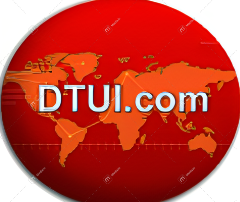A High Impact Cultural Diversity Best Practices
The purpose of this elective course is to provide an overview of organizational assessment and procedures for conducting assessments. You will need to assess an organization to identify performance gaps and barriers to workplace engagement and inclusion.

DTUI.com
Course Overview
HIGH-IMPACT DIVERSITY BEST PRACTICES
Length: 10 Online Modules
Office hours: Virtual sessions of 1 hour twice weekly|
Final Grades: Pass; No Pass (<78%)
Format: Module 1-10 (Online/Virtual)
Contact: (415) 692-0121 (Business Office); customerservice@dtui.com
Credits: 8.6 IACET CEUs
Certification Program: This course is one of two courses needed to complete the Certified Diversity Trainer credential requirements. Each course is certified by DTUI.com LLC. The International Association for Continuing Education and Training has accredited DTUI.com LLC.
Course Overview
Diversity Certification Training Goals
- Highlight the importance of making a case for the use of specific cultural diversity and inclusion best practices rather than copying what other organizations are doing.
- Provide insights into how cultural diversity best practices play an important role in managing diverse talent.
- Develop an understanding of what cultural diversity recruitment and other best practices entail.
- Develop an appreciation for the importance of cultural diversity mission and vision statements.
- Support participants in the development of a cultural diversity best practice plan.
- Upon completion of the course, participants will:
Compare and contrast strategies for assessing organizational D&I needs regarding diversity best practices. - Apply the tools needed to implement diversity programs that meet the unique needs of a company.
- Differentiate best practices employed by organizations that have created highly successful internal diversity strategies and innovative solutions.
Technical Needs
- Computer with high-speed internet access
- Access to the online meeting platform (Please try this at least two days before the first lecture/discussion session to manage any technical difficulties beforehand).
- Telephone access (preferably with earphones)
- MS Word (Do not submit files in pdf, please)
Course module details
Technical Needs
Welcome
Module 1: Making the Case for D&I Practices
Module 2: Managing Diversity Challenges
Module 3: Cultural Diversity Recruitment
MODULE 4 A: DIVERSITY INITIATIVES
MODULE 5: The Utility of Diversity Best Practices
Module 6: Employee Resource/Affinity Groups
Module 7: Managing Diversity Best Practices - Mentorship/Sponsorship
Module 8: Managing Diversity Best Practices -Diversity Steering Committee
Module 9: Diversity Mission & Vision Statement
Module 10: Defining Diversity
Kopenhavn
This course provides participants with a framework for transforming an organization into an engaged, productive, and inclusive workforce
Why students love this course
Still Have Any Questions?
Check out the FAQs.
The DELA difference is that our training is designed to develop professional awareness, attitude (inclusive values and beliefs), knowledge, and skills. A comprehensive examination only assesses your knowledge. Each DELA program is designed to develop professional skills rather than cover only the knowledge you need to pass a final exam. Our certification recipients boast about having designed and developed a strategic plan, a diversity training, or a diversity recruitment plan upon completing their program. In that way, the knowledge you is put into practice. Instructors provide the feedback needed to complete the projects successfully. One graduate boasts that she developed a cultural diversity strategic plan by the end of the CDP training, for example. Her organization adopted the plan because she included staff during the design and development phases. A police officer developed cultural diversity training for officers in her department. The product you develop can be put into your professional portfolio along with the credentials that you earn..
>The CDE is designed and developed for individuals serving in cultural diversity leadership roles within an organization. The individual typically reports directly to the head of the organization, such as the CEO or president. The graduate’s range of potential influence within the organization is considerable compared to a diversity manager or someone with diversity and inclusion (D&I) expertise reporting to a middle manager, such as the human resource manager.
Yes, the distance learning format was the first format we offered the programs back in 1998. Now we use a state of the art learning platform called Canvas Instructure. You can begin the first course in each online program as soon as you register. There is also a weekly – strictly voluntarily – live one-hour video conferencing session for the course. It either meets either on a Tuesday or Thursday. You do not have to attend. It there when you want to attend. You can ask questions, meet other participants, and get an overview of the current module being covered in the course.
That is an excellent question. As of August 1, 2020, federal and state guidance on how to reopen live classroom training sessions is insufficient to even guess at start dates. The pandemic has not been arrested and that is likely the best turn of events that will offer that insight. Please check back as often as necessary or sign up to receive our newsletter at the bottom of this page.
In the meantime, online courses have, understandably, become very possible. In addition, we are currently considering a more intensive live, online experience (e.g., fours hour per day over two days for each course). If that is something you are interested in learning more about, please contact us.
Diversity Certification refers to the credentialing of professionals to serve in management or executive level diversity and inclusion leadership roles.
















